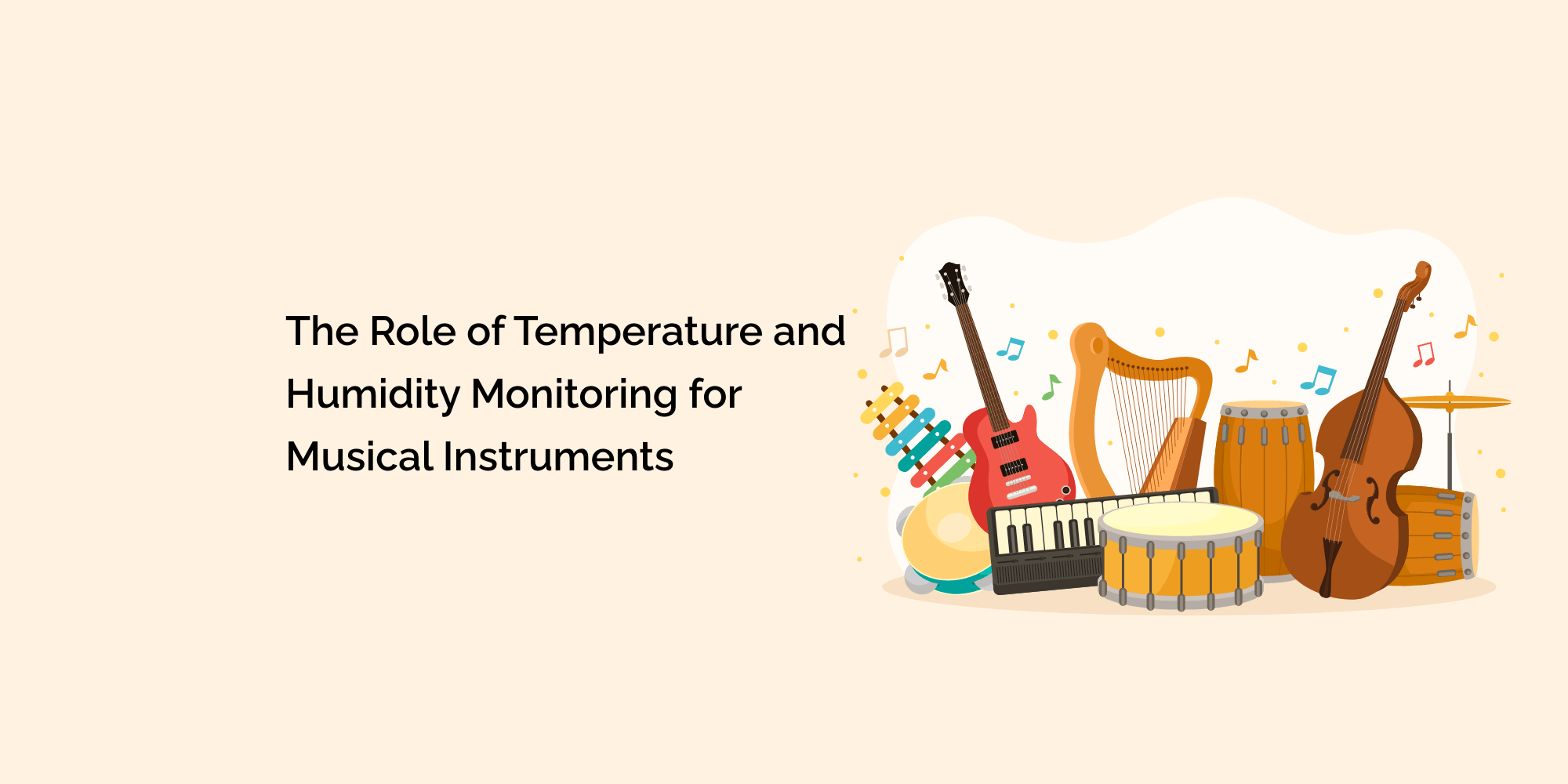The world of music is a realm of emotion, expression, and artistry. Within this world, musical instruments hold immense significance, acting as vessels through which musicians convey their feelings and stories. However, the delicate craftsmanship of these instruments requires careful preservation to maintain their quality and performance. Temperature and humidity play a vital role in this preservation process. In this blog, we delve into the importance of temperature and humidity monitoring for musical instruments, exploring how these factors impact their condition, and how proper monitoring can ensure their longevity and impeccable sound quality.
The Impact of Temperature and Humidity on Musical Instruments:
Temperature and humidity are critical factors that affect the condition of musical instruments:
-
Wood-Based Instruments: Instruments made from wood, such as violins, cellos, and guitars, are particularly susceptible to changes in temperature and humidity.
-
Wood Expansion and Contraction: Fluctuations in temperature and humidity cause wood to expand and contract, potentially leading to warping, cracking, and changes in sound quality.
- Metal Instruments: Brass and other metal instruments can also be affected by humidity, leading to tarnishing and corrosion.
Maintaining Optimal Conditions:
Preserving musical instruments requires maintaining optimal temperature and humidity levels:
-
Ideal Temperature Range: The ideal temperature range for musical instruments is usually between 60°F to 70°F (15.5°C to 21.1°C).
- Optimal Humidity: Relative humidity levels between 40% and 60% are recommended for wood-based instruments.
The Role of Monitoring:
Temperature and humidity monitoring is crucial for preserving the quality and longevity of musical instruments:
-
Early Detection: Monitoring systems provide real-time data and alerts about any deviations from optimal conditions.
-
Preventive Measures: Prompt alerts allow musicians to take preventive measures to avoid potential damage.
- Constant Surveillance: Continuous monitoring ensures that instruments are kept within the desired climate range.
The Benefits of Temperature and Humidity Monitoring:
Adopting monitoring solutions for musical instruments offers a range of benefits:
-
Preservation: Instruments maintain their structural integrity and sonic characteristics over time.
-
Sound Quality: Proper humidity and temperature levels contribute to consistent sound quality, tone, and resonance.
-
Longevity: Well-preserved instruments can serve musicians for generations, passing down their legacy.
-
Reduced Maintenance: Preventing damage through monitoring reduces the need for costly repairs.
- Value Retention: Instruments in excellent condition retain their value and may even appreciate over time.
Challenges in Different Environments:
Different environments pose specific challenges to instrument preservation:
-
Dry Climates: Extremely dry climates can cause wood to shrink, affecting the instrument's playability and sound quality.
- Humid Climates: High humidity levels can lead to swelling, warping, and mold growth in instruments.
Humidity Control Strategies:
Maintaining proper humidity levels requires strategic approaches:
-
Humidifiers: Humidifiers can be used in dry climates to add moisture to the air and prevent wood from drying out.
-
Dehumidifiers: Dehumidifiers help control excessive humidity in environments prone to high moisture levels.
- Instrument Cases: High-quality instrument cases with humidity control compartments can help regulate climate.
Smart Solutions for Instrument Preservation:
Smart technology offers advanced solutions for temperature and humidity monitoring:
-
Wireless Sensors: Wireless sensors provide real-time data and can be placed in instrument cases or storage spaces.
-
App Integration: Some sensors integrate with smartphone apps, offering remote monitoring and alerts.
- Data Insights: Historical data insights help musicians track climate patterns and make informed decisions.
Conclusion:
Musical instruments are not merely objects; they are vessels of emotion and artistic expression. Preserving these instruments is not just about maintaining their physical condition, but also about honoring their contribution to our cultural heritage. Temperature and humidity monitoring play an integral role in safeguarding these treasures, ensuring they remain in optimal condition for musicians to craft their melodies and stories. With the right monitoring solutions and climate control strategies, musicians can continue to create harmonious melodies and connect with audiences for years to come.








